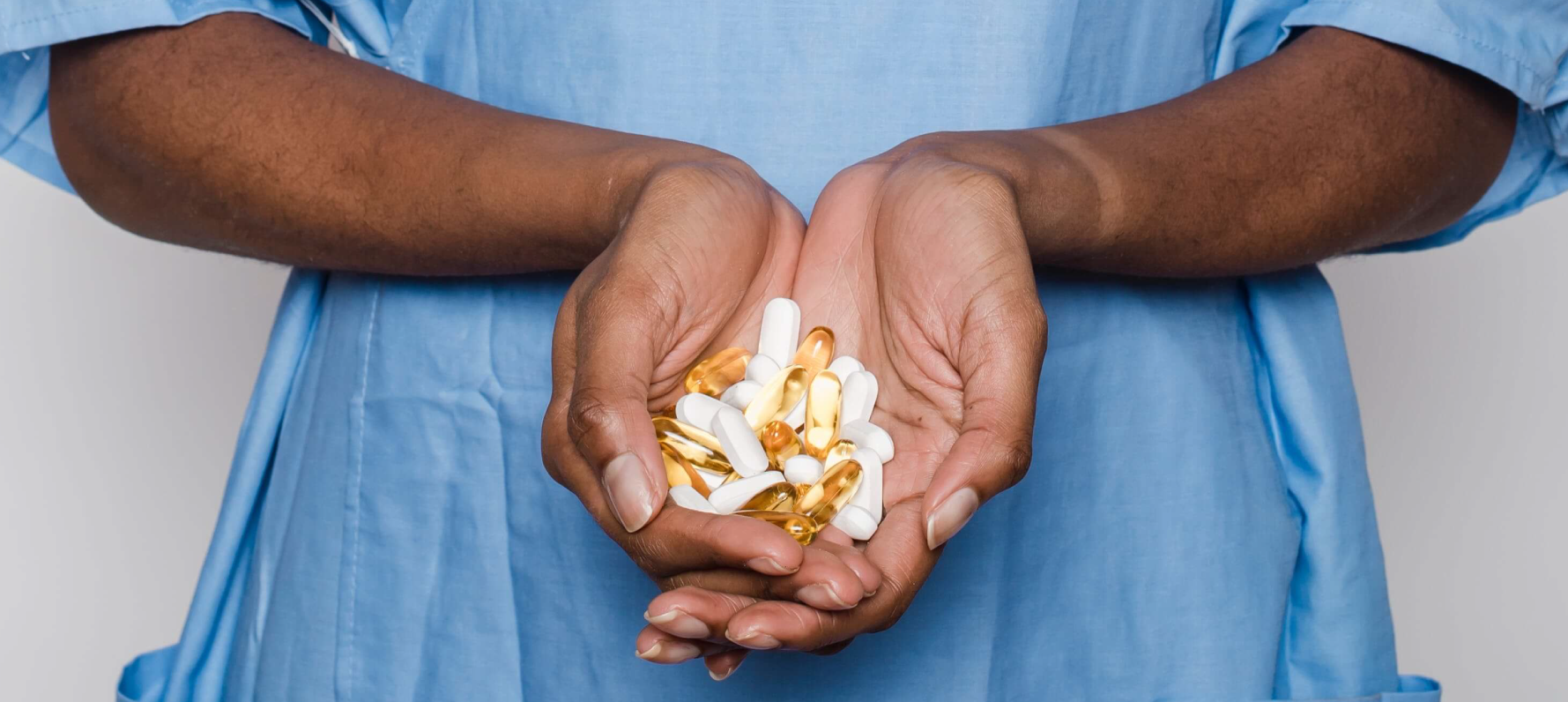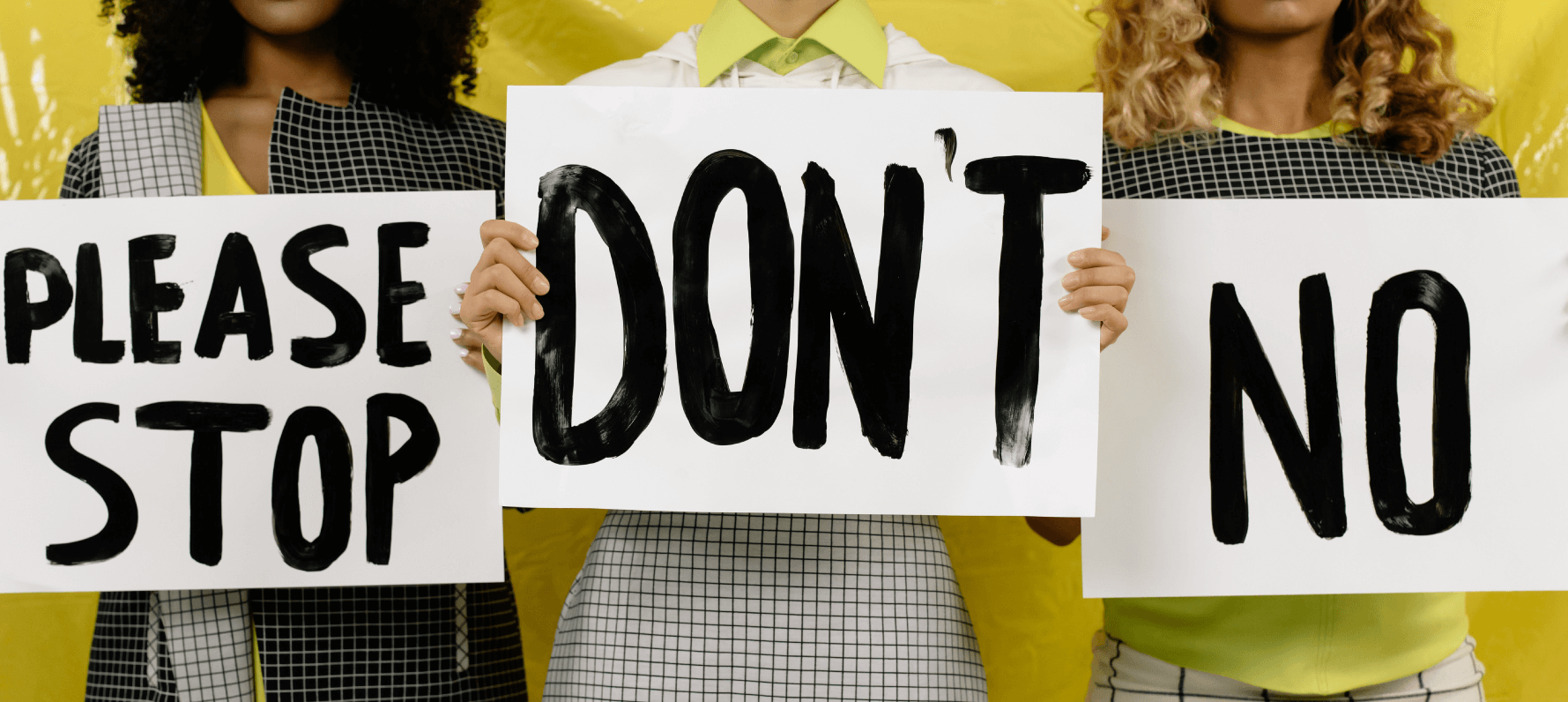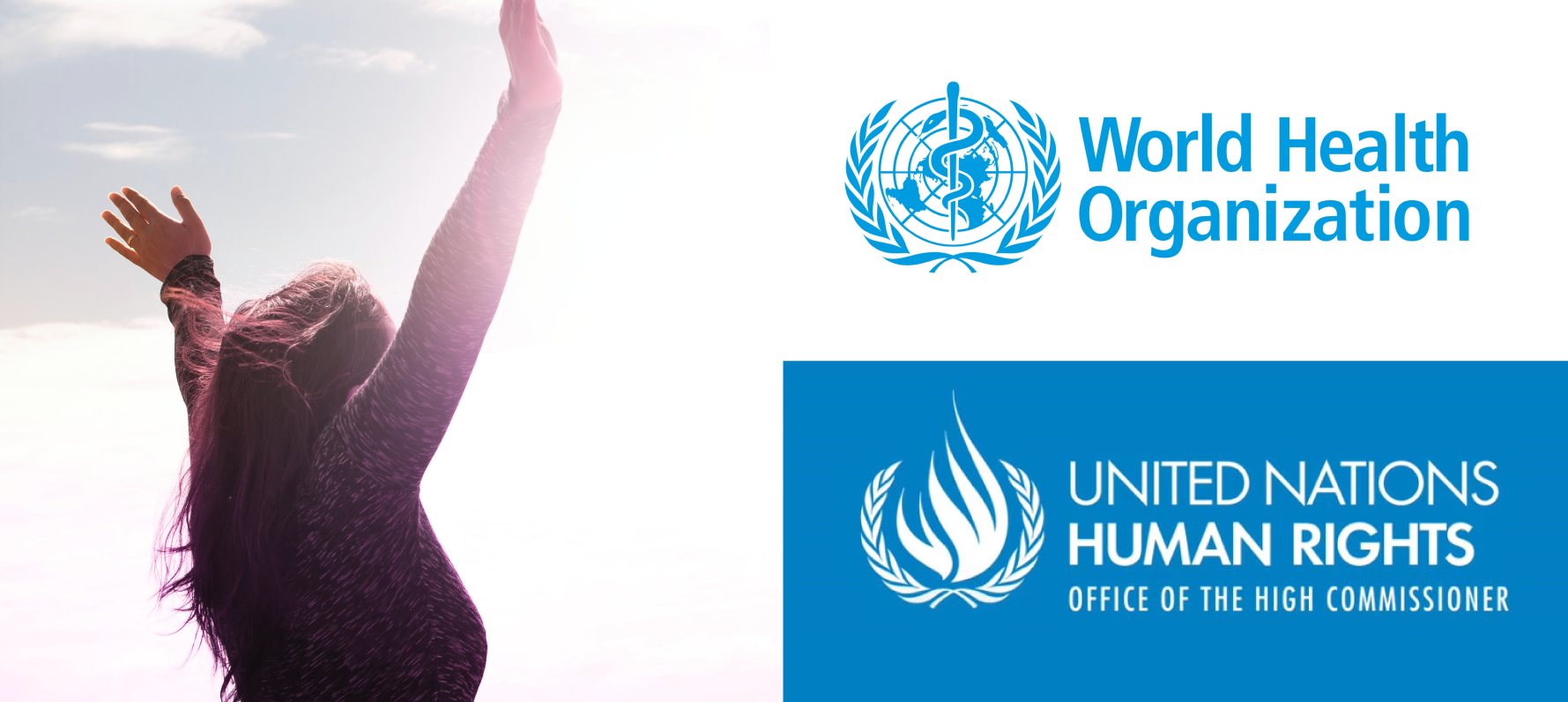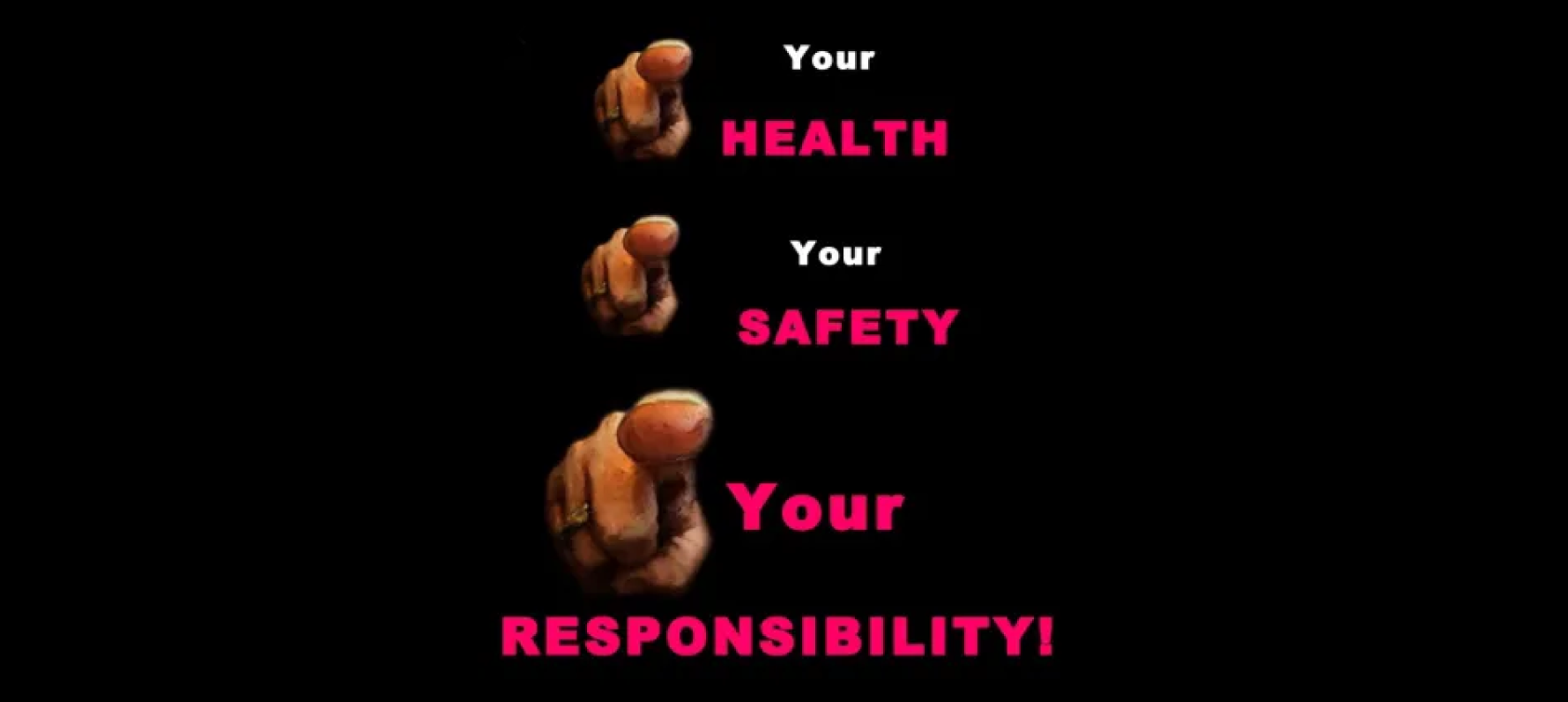‘Men only target vulnerable women’ (and other myths)
One of the biggest lies we’ve ever been fed is that women and girls have an innate vulnerability which causes sex offenders, domestic violence offenders and child abusers to spot them and target them.
I write this blog to dispel this powerful myth, and to reassure millions of women and girls that it wasn’t their ‘vulnerability’ which led to them being beaten up, abused, raped or harmed.
I want to make this argument in six points:
- The vulnerability myth is based on some very old, and very shit science
- We like to deny our own vulnerability by calling other people ‘vulnerable’
- We teach children that only ‘vulnerable’ kids get abused and harmed
- We have an oversimplified understanding of abusers and offenders
- We don’t know how to tackle the global epidemic of male violence
- Vulnerability does not lead to other humans committing crime
The message which I hope to convey is that ‘vulnerability’ is not the cause or the source of the abuse that women and girls are subjected to. Further, we have leant on this explanation so heavily that services, programmes, interventions and policies are based upon it, despite it being incorrect.
The vulnerability myth is based on some very old, and very shit science
Calling women and girls ‘vulnerable’ is so commonplace now, you might not even notice it. You might not notice that when a woman or girl is abused, someone will point out her ‘vulnerabilities’. You might not notice that the conversation often becomes about her background, her personality, her childhood or her understanding.
The truth is that this process of seeking and assessing ‘vulnerabilities’ of women and girls who have been abused and harmed is deeply embedded into social care, psychology, mental health, counselling, policing, legislation, education, law and justice.
To understand how we got to a place where we pick apart the woman or girl and lay out her ‘vulnerabilities’ as reasons for being raped, trafficked, abused or traumatised – we have to look at some of the old theories which have continued to influence our thinking.
One such theory is almost 80 years old, and comes from positivist victimology.
Key theorists in victimology and criminology as far back as 1948 argued that only certain types of people became victims of crime and often brought it upon themselves.
Hans Von Hentig wrote in Time Magazine (1948):
‘Certain characteristics of law-abiding citizens arouse a counter reaction in the criminal. The inexperienced businessman, for example, invites embezzlement; the nagging wife is flirting with murder; the alcoholic is a natural for robbery. Thus, the victim becomes the tempter.’
As you can see from this example, it is theorised that victims ‘tempt’ and ‘arouse’ criminals to commit crimes by being vulnerable, inexperienced – or… a woman.
Spoiler alert: There is a lot of misogyny in vulnerability theories and research.
Later victimology theorists such as Benjamin Mendelsohn and Stephen Schafer also suggested that victims caused crime by being weak, vulnerable, female, old, disabled or young. All three theorists suggested that victims precipitate crime by provoking offenders. Whilst this sounds somewhat outdated, these perspectives are alive and well.
Many theories within psychology and criminology still rely on the assumption that women subjected to sexual and domestic violence either brought the offence on themselves, should have done something to protect themselves, should have behaved in a different way or that their vulnerabilities led to the offender targeting and attacking them.
Victim precipitation theory and research suggests that victims precipitate a crime by their behaviour, vulnerability, character or even the way they walk. This research is still ongoing, and only recently I spoke to an academic who was conducting research into which women were ‘vulnerable’ to being raped by their gait and style of walking.
The argument goes that if a woman or girl walks in a way which is not confident or assertive, she gives off some sort of signal to offenders that she is vulnerable and would therefore be a good target for rape or abuse.
Walking isn’t the only thing which academics have suggested to be a vulnerability in women and girls – everything from their appearance to their childhood has been explored in the literature for decades. There are thousands of articles and studies which seek to name the ‘vulnerability factors’ of women and girls, with the aim of reducing them by changing something about that woman or girl.
Interestingly, the same cannot be said for men who are raped and abused, they are not generally discussed as if they were ‘vulnerable’ to offenders or ‘giving off signals’ to be raped or abused.
It’s as if we see rape as a violent crime when committed against men, but as natural process of taking of an opportunity of a weak person, when rape is committed against women.
The reason that I reject this research and these theories entirely is simple: none of it is true, and if you look hard enough for correlations, you’ll find them no matter what they are.
If I looked hard enough, I bet I could find a correlation between which vegetables women eat and being subjected to violence or abuse by men. The reality is that violence against women and girls is so common, that you can often find correlations that don’t really exist, purely based on how common one of the variables is.
I, and thousands of other professionals, have been working with abused women and girls for decades. Those of us who have done these jobs know that we come across women and girls from every background imaginable. I’ve never seen a particular personality, character, appearance, walk or background that has formed any sort of pattern in the women I have supported.
I’ve supported everyone from female MPs to child victims of trafficking. I’ve worked with lawyers and police officers who were being raped and abused by their husbands at home. I’ve worked with social workers who work in safeguarding teams every day and live in fear of their partners. I’ve worked with women who were experts in martial arts who were raped and beaten up by men. I’ve discussed experiences of abuse and rape with women in the military and women who are now veterans.
Equally, I’ve worked with women who have been in care since they were toddlers. I’ve supported girls who have been trafficked around the country. I’ve worked with girls who have never known a safe place to live and have struggled to get a decent meal.
I can’t think of any ‘vulnerability’ that any of these women or girls had in common. They were a mixture of confident, nervous, strong, terrified, healthy, unwell, believed, ignored, extrovert, introvert, popular, lonely, religious, atheist, old, young, poor, rich, supported and isolated women and girls.
The only thing they had in common was that they were females in a patriarchy, and that means that statistically, they are at constant risk from male violence.
We like to deny our own vulnerability by calling other women ‘vulnerable’
You might be wondering why we go to such efforts to name the vulnerability in the woman or girl.
My work, and the work of many others, explores the concept of ‘denial of personal vulnerability’.
Simply put, this means that we are all vulnerable at some level, but we like to pretend we are not.
We are vulnerable not because of innate characteristics or behaviours, but purely due to how common abuse and rape is. At any given time, any of us could be attacked, assaulted, abused, threatened, groomed or even murdered. But to think in such terms would leave most of us anxious and terrified to live a normal life, so we instead tell ourselves that it would never happen to us, because we are not ‘vulnerable’ like those other women and girls who are raped and abused.
We tell ourselves that we would never be that stupid, never be that trusting, never drink that much, never date that guy, never go to that place. We tell ourselves that we would ‘see the signs’. We tell ourselves that the first time he laid his hands on us, we would be out of the door.
It’s all bullshit, of course. But we like to redirect our own feelings of personal vulnerability by pointing the finger at victims and then picking out their ‘vulnerabilities’. We then say ‘ahhh, that’s why she was raped, well, I would never do that, I would never let that happen to me.’
It’s a defence mechanism. A coping strategy for living in a patriarchy. We blame and name other women and girls as ‘vulnerable’ so we don’t ever have to face the fact that it could happen to us.
This is true even when academics write papers about ‘vulnerabilities’ of women and girls subjected to male violence. The difference is, they get to dress it up with big words, theories and titles so that we all nod and agree. It must be the vulnerabilities of the victims! Of course!
We teach children that only ‘vulnerable’ kids get abused and harmed
We invest a huge amount of time and effort into convincing each other that only the vulnerable will be abused, raped and harmed. This starts early, as early as primary school.
Children are taught in PSHE, assemblies and workshops that only the vulnerable children will be abused or groomed. Resources from everywhere from NSPCC to Barnardo’s have endorsed the myth that only the vulnerable children will be abused, and that if we remove their ‘vulnerabilities’ they will be safe from sex offenders and child abusers.
It’s again, all total rubbish. But that doesn’t stop us from showing children videos, resources and sessions which encourage them to identify the ‘vulnerability’ of the child who is raped and abused. It also doesn’t stop us from constructing entire vulnerability assessments in professional practice which erroneously attempt to identify which vulnerabilities of the child caused the abuse, so we can ‘solve’ them.
A common example of this is when professionals conclude that a girl has been exploited or raped because she didn’t ‘have enough education about consent and healthy relationships’.
This leads to plans around the child which suggest that increasing her knowledge of consent and abuse will protect her from the sex offender who is exploiting her, because once she has more knowledge, she will use the knowledge to defend herself and protect herself better.
This completely ignores the fact that even the most educated professionals who work in abuse every day, are still just as likely to be abused as anyone else. There has been no research which suggests that knowledge of abuse is protective. It is educative at best. This is because power dynamics and the choice to commit violent crime against women and girls has literally fuck all to do with the victim and has everything to do with the motivation and personal choices of the offender.
If we are to tackle this myth, we need to look at why we embed it from such an early age in girls and boys around the world.
We have an oversimplified understanding of abusers and offenders
One of them main issues we have is that whilst we like to scream ‘monster’ and ‘pervert’ and ‘paedo’ at offenders, we don’t actually get taught anything about these men. This leads to serious misunderstandings about offenders who commit domestic and sexual violence offences.
One such misunderstanding is that offenders carefully seek out and then deliberately target the most vulnerable women and girls in society.
This is very easily disproved, especially as direct qualitative research with sex offenders and domestic violence offenders shows that men who commit these crimes target their victims for hundreds of reasons, most of which have absolutely nothing to do with vulnerability.
In interviews, sex offenders have said that they targeted girls because they liked their hair, their tights, their body shape and their smile. Sex offenders report targeting children because they are confident and happy. Some talk about their specific sexual fantasies. Some only target girls of certain ages and ethnicities. Some sex offenders report not caring who their victims are at all, and will rape and abuse any child they can.
When it comes to online sex offending, there is plenty of evidence that sex offenders target children and adults randomly, based on whoever responds first and in a way they want. This means they can literally use a scattergun approach to attack and groom hundreds of victims per day, and never know anything about their so-called ‘vulnerabilities’.
In chat logs of sex offenders abusing children which were analysed by Kloess et al. (2017), most offenders never even asked for details about the child. They were not seeking vulnerabilities to exploit. They were targeting hundreds of different kids. They had very little in common.
With the abuse and grooming of adult women, the same can be said. It is seen as ‘common knowledge’ that abusers target vulnerable women – and yet, many offenders actually target assertive and confident women who spend the rest of their lives wondering how that man managed to grind them down and destroy their sense of self.
The reality is, for lots of misogynists, destroying confident and healthy women is part of the fun. It’s part of the kick they get out of belittling and humiliating her. Why would an offender always target vulnerable women, when they enjoy breaking down women and controlling them?
The vulnerability theory is just myth. It suggests that offenders don’t target or abuse ‘strong’ women, and that if you are a strong woman, it shouldn’t ever happen to you.
This is particularly true for Black women who are generally positioned as strong, aggressive matriarchs due to racism. So it’s even harder for Black women to be seen as victims of abuse and male violence, because we assume they are all ‘strong, assertive’ women who would never be targeted by abusers. There has been much written about this phenomenon, and it deserves a lot more attention. Especially as it exposes so fluently, the stereotypes we use to build the ‘perfect victim’, and what happens when you as a woman, sit outside of that perfect victim stereotype.
If you are not seen as vulnerable or weak, you can often be positioned as a liar or a malicious ex.
It’s almost as if we believe that all victims of male violence must be inherently vulnerable women and girls, and they are not vulnerable, they are not real victims.
We don’t know how to tackle the global epidemic of male violence
This is probably fairly obvious, but we don’t actually know how to (and there is very little appetite for) challenge and end global, systemic male violence.
We did get to a point where we started to take notice of the fact that 97-99% of all violent crime is committed by men globally, and that we had to do something about the way men and boys were being socialised and brought up to regard fighting, violence, sexual power, competition and bullying as masculine traits to aim for.
However, more recently, we have seemingly gone backwards. When we talk about male violence or male crime stats, we are shouted down and told we are misandrists and man-hating feminist bitches, (ironic, but okay).
It seems that if we cannot even publicly address decades of solid evidence and statistics, we definitely cannot work towards tackling male violence yet. As much as I would love to see that for the good of our entire species, you can lead a horse to water but you cannot force it to drink.
Everyone knows the reality of violent crime, but many are reluctant to do anything with it.
We’ve now moved away from holding men responsible (again) and gone back towards positivist theories of victim precipitation and vulnerability. Vulnerability in one humandoes not lead to other humans committing crime
My final message has to be the clearest.
It does not matter how vulnerable a woman or girl is, it never ever ‘causes’ another human with free will to choose to abuse, rape or kill them.
Absolutely nothing inside that victim has any power or effect on the choice-making of an offender.
They are capable and competent adults who make active choices to harm women and girls for one reason:
Because they want to.
You don’t need any other theories. Offenders do it, ultimately, because they want to. That’s why they are able to keep their cool with their boss, or their best mate, or some dickhead they play footy with – but ‘lose their cool’ with their girlfriend at home or abuse little girls.
This isn’t about vulnerability of the woman or girl, it’s about a choice that is made by a misogynistic, violent offender who wants to abuse and harm women and girls (and in some cases, children in general rather than just girls).
Let me explain something to everyone reading this blog:
If vulnerabilities lead to some sort of human arousal or temptation in us to exploit or abuse or kill weaker humans, we would all do it (or at least the majority of us). And yet, not only do the majority of humans not commit these crimes, but women hardly commit any.
Globally, women are only responsible for around 2% of violent crime. So does this mean that victim precipitation theory only applies to male offenders and female victims?
If the vulnerability theories were real, that would mean that if you came across a drunk woman, accidentally separated from her friends and lost in the high street, you would think ‘she’s vulnerable and alone, I could do something to her right now!’
But you don’t, do you?
Most of us have never had a thought like that in our lives.
You might instead see her and think ‘shit, she’s alone, is she okay?’
Or you might approach her and ask her if she’s safe, and where her friends are. You might ring an ambulance or police if needed. You might help her back to somewhere safe like a taxi rank or a bar where her friends were.
That’s because you made a CHOICE.
100 people could walk past her and the majority would see all of her so-called ‘vulnerabilities’ and either try to help her or not stop at all.
And yet a handful may stop and make a choice to harm her, rape her, rob her or kill her.
Her ‘vulnerabilities’ had nothing to do with it. It is all about the active choice making of the offender.
It is ALWAYS the choice of the offender.
Vulnerability of women is just a myth used to distract us from the real cause of male violence: men.
About the author: Dr Jessica Taylor
Dr Jessica Taylor (PhD, FRSA) is a Chartered Psychologist specialising in the victim blaming of women subjected to male violence and the pathologisation of women's mental health. She is the Director of VictimFocus, an international consultancy and research organisation dedicated to changing systemic victim blaming and misogyny in government, policing, law, medicine and social care services. She is the Sunday Times Best Selling Author of 'Sexy But Psycho: How the Patriarchy Uses Women's Trauma Against Them' and 'Why Women are Blamed For Everything.
Get more trauma-informed content!










